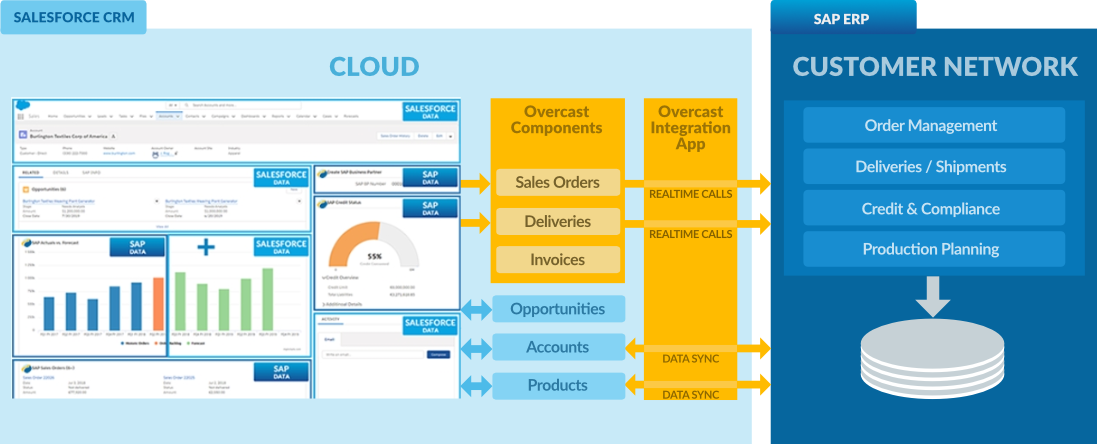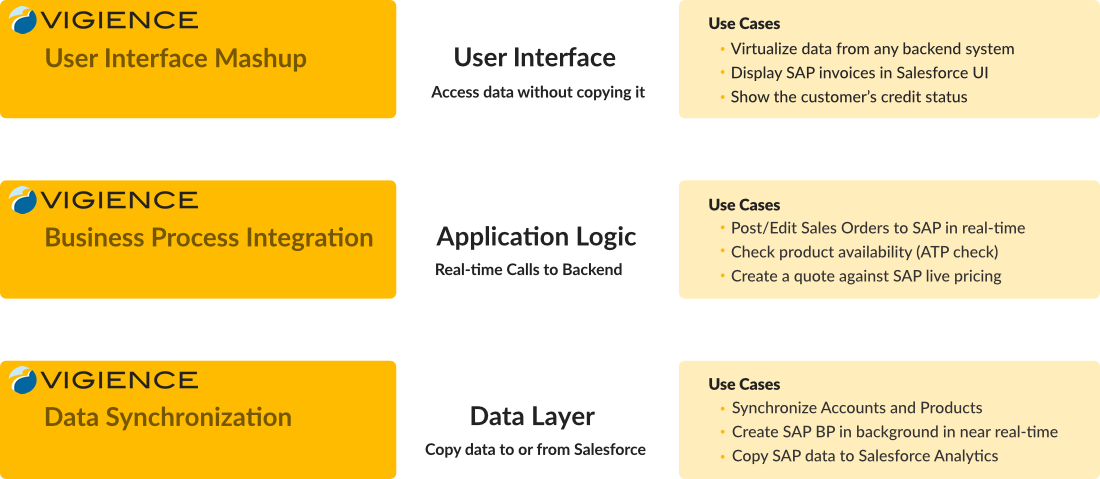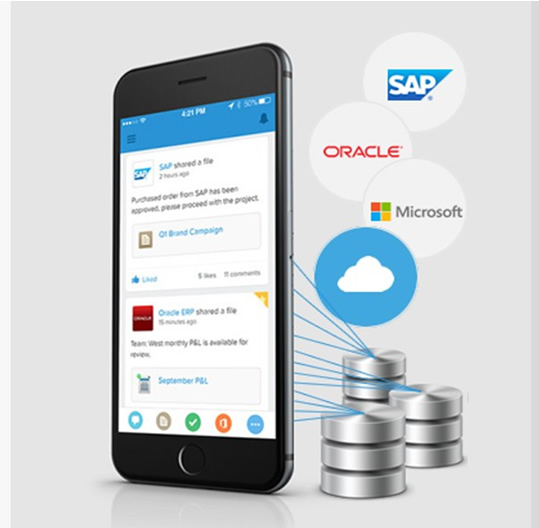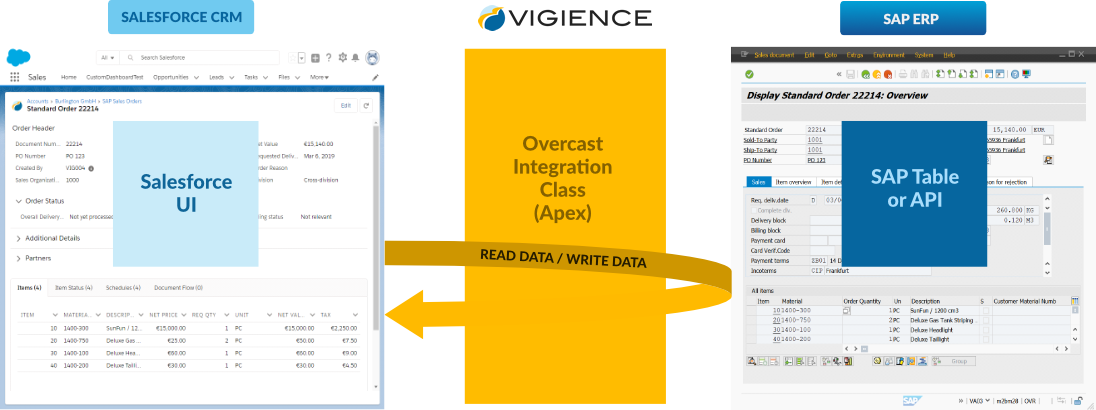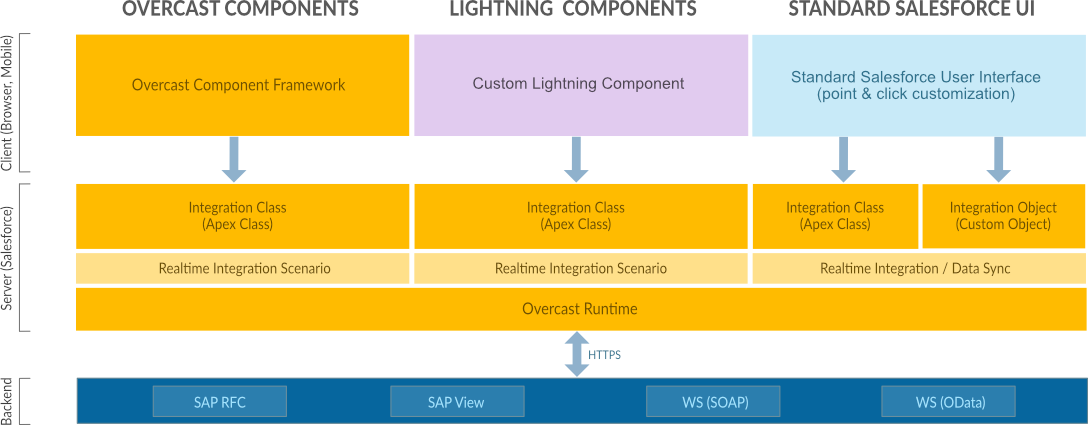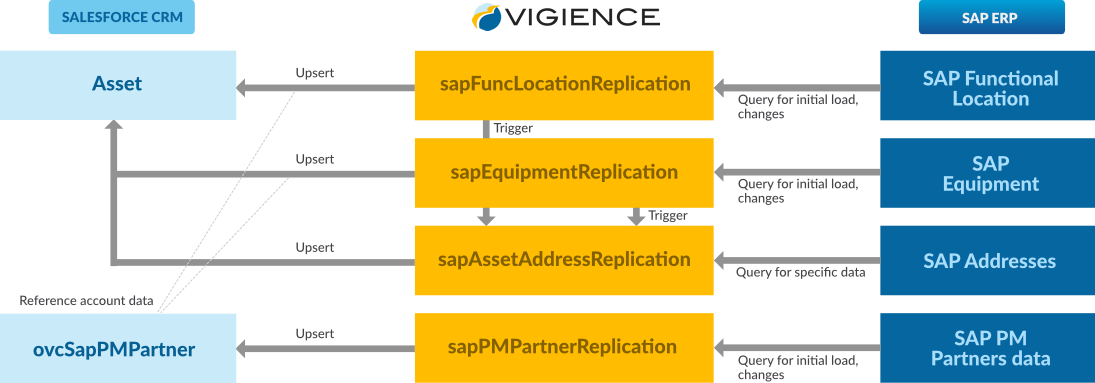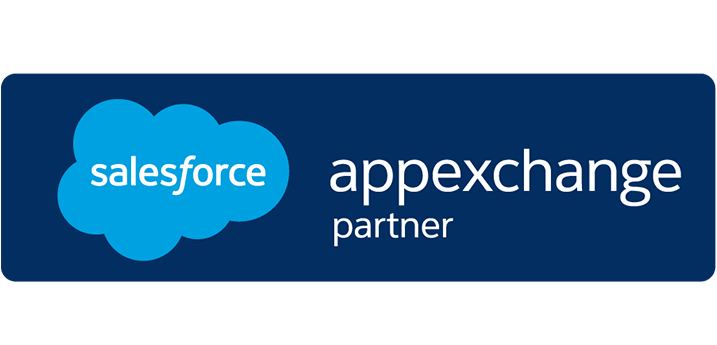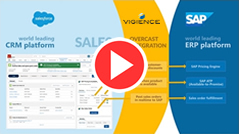Overcast Integration App
Overcast is a Salesforce-native cloud integration service that lets you quickly and easily connect Salesforce to your SAP, Oracle, Microsoft and other on-premise applications.
The Overcast Integration App redefines Salesforce integration through its mixed replication/real-time architecture: an elegant, modern architecture that reduces integration complexity & risks significantly. Think of it as a Salesforce app that provides a data access layer for on-premise data and processes rather than a middleware.


